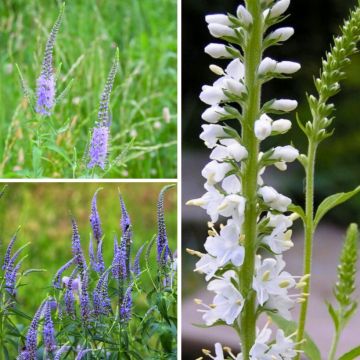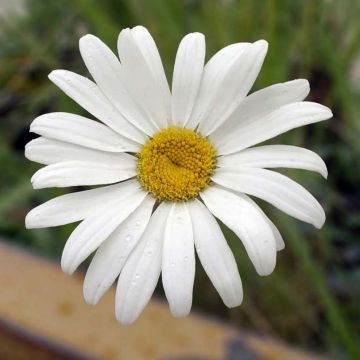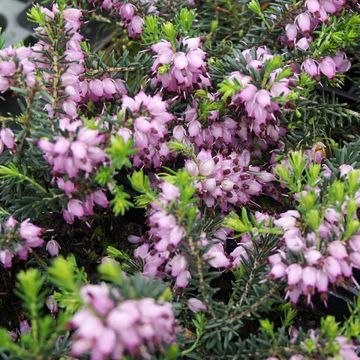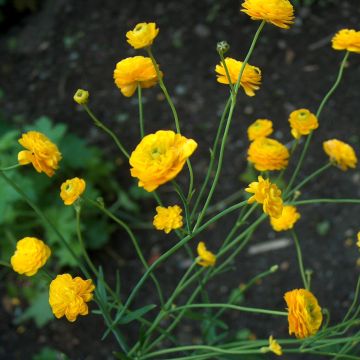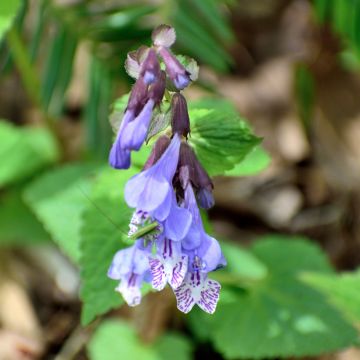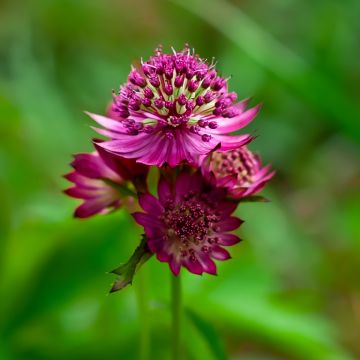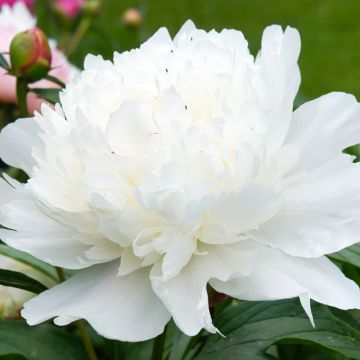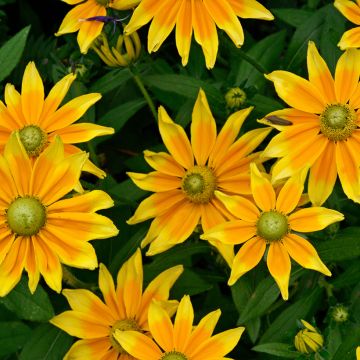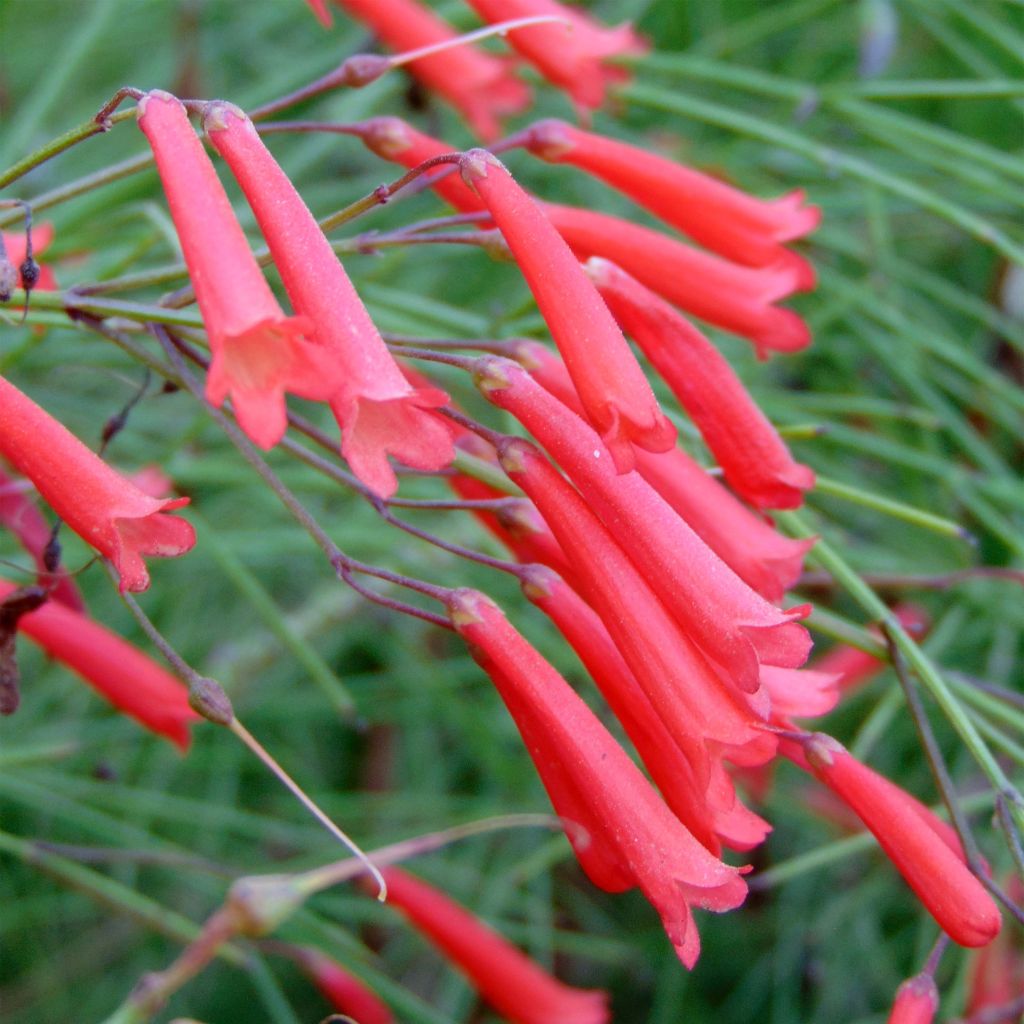

Russelia equisetiformis


Russelia equisetiformis
Russelia equisetiformis
Russelia equisetiformis
Firecracker Plant, Coral Plant, Fountain Plant
No sign of recovery despite winter protection with a P17 cover and sheltered pot, hence my 2-star rating. Everything else is budding out quietly.
Jean-Jacques, 18/02/2023
Special offer!
Receive a €20 voucher for any order over €90 (excluding delivery costs, credit notes, and plastic-free options)!
1- Add your favorite plants to your cart.
2- Once you have reached €90, confirm your order (you can even choose the delivery date!).
3- As soon as your order is shipped, you will receive an email containing your voucher code, valid for 3 months (90 days).
Your voucher is unique and can only be used once, for any order with a minimum value of €20, excluding delivery costs.
Can be combined with other current offers, non-divisible and non-refundable.
Home or relay delivery (depending on size and destination)
Schedule delivery date,
and select date in basket
This plant carries a 12 months recovery warranty
More information
We guarantee the quality of our plants for a full growing cycle, and will replace at our expense any plant that fails to recover under normal climatic and planting conditions.
Would this plant suit my garden?
Set up your Plantfit profile →
Description
Russelia aquisetiformis is nicknamed the Coral Plant or Fountain Plant due to its magnificent weeping habit and its small tubular flowers of bright coral red. They bloom en masse from spring to autumn on green and flexible stems almost devoid of leaves, transforming the plant into a fiery cascade. The Fountain Plant is tender, but very water-efficient. It thrives in full sun, in rockeries or ideally above a dry stone wall in mild regions. It is also a fabulous terrace plant, with a very exotic look, that can be placed in a large pot for winter storage.
The Russelia equisetiformis (synonym Russelia juncea) belongs to the plantain family and is found from Mexico to Guatemala. It is primarily found on the roadside but also in arid plains and sandy clearings. It is a woody-based perennial, very bushy and branched, resembling a horsetail or rush. From the gradually spreading base emerge thin green stems, slightly angular, flexible but very strong, which rise and then fall, reaching about 1m (3ft) in all directions. The base of the stems bears a few small narrow leaves, reducing to simple scales towards the ends of the stems. Flowering begins in May-June and continues until November. A plant sheltered from the cold can flower continuously from March to December. The stems branch out at their ends, producing dense clusters of tubular flowers measuring 1 to 3cm (1in) in length, bright red with a hint of orange, opening into 5 tiny rounded lobes. Vegetation is damaged at -2°C, but a well-established plant will be able to regrow from the base after experiencing a brief frost of -6°C.
This Fountain Plant is preferably placed at a height, allowing for the admiration of its superb cascading vegetation covered in flowers. In mild climates, place it above a dry stone wall, on a slope, or on a rockery that can provide the perfect drainage it requires. Spectacular, this plant alone forms a magnificent decoration. However, you can accompany it with light annuals such as lobelias or nemesias. Plants with grey or white foliage, as well as California poppies, will also be good companions. On the terrace, place it in a large pot, right next to a Cape plumbago; the combination of colours is fantastic!
Report an error about the product description
Russelia equisetiformis in pictures


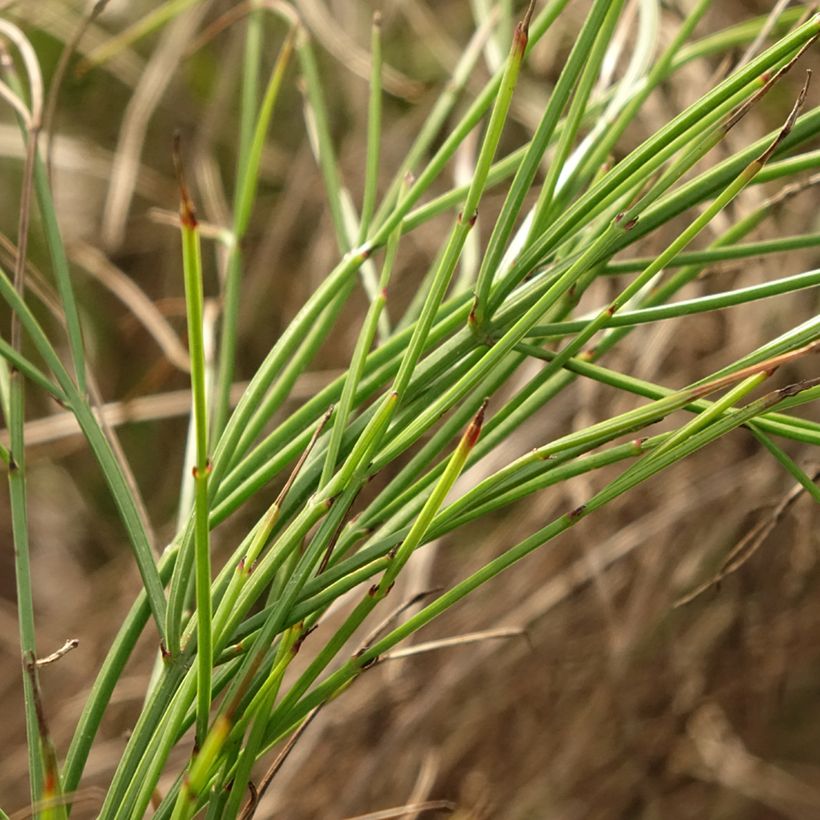

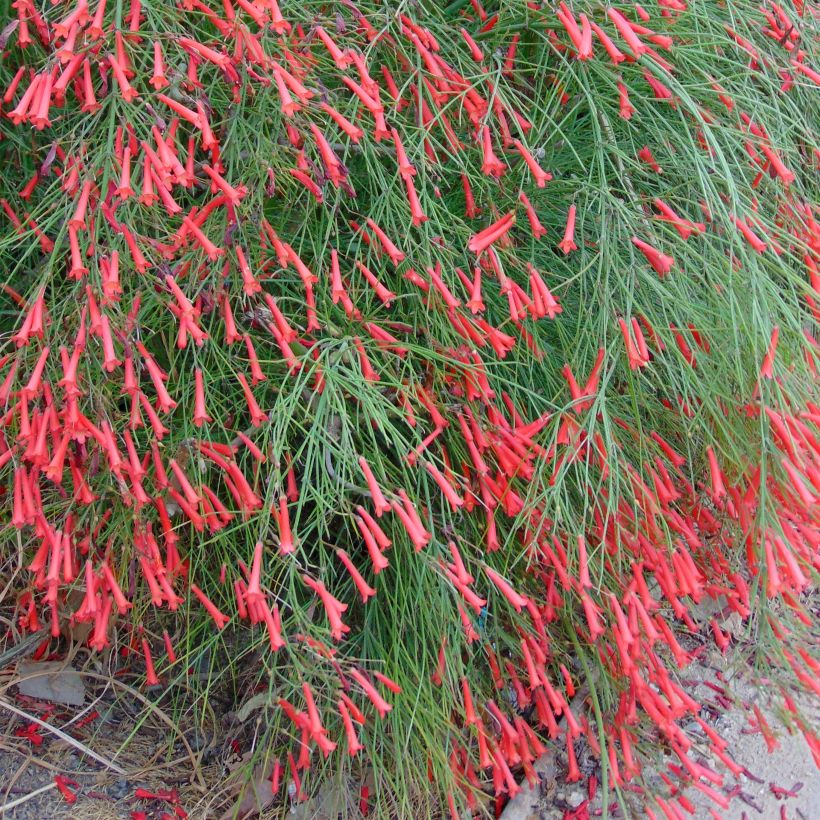

Flowering
Foliage
Plant habit
Botanical data
Russelia
equisetiformis
Plantaginaceae
Firecracker Plant, Coral Plant, Fountain Plant
North America
Other Perennials A to Z
View all →Planting and care
Plant the Russelia after spring frosts in cold climates, in September-October in warm climates with very mild winters. Place it in a very well-drained, light, ordinary, porous, stony, even limestone soil, not too poor to support its flowering. Add a good pocket of potting soil when planting. This plant prefers very sunny and sheltered situations. It requires occasional watering in summer in drier regions to flower abundantly. Occasional application of soluble fertilizer promotes abundant flowering.
This plant tolerates pot cultivation wonderfully (in a light mixture of potting soil and sand) which allows gardeners in colder areas to store it. Water regularly and provide liquid fertilizer for flowering plants.
Planting period
Intended location
Care
Planting & care advice
-
, onOrder confirmed
Reply from on Promesse de fleurs
Similar products
Haven't found what you were looking for?
Hardiness is the lowest winter temperature a plant can endure without suffering serious damage or even dying. However, hardiness is affected by location (a sheltered area, such as a patio), protection (winter cover) and soil type (hardiness is improved by well-drained soil).

Photo Sharing Terms & Conditions
In order to encourage gardeners to interact and share their experiences, Promesse de fleurs offers various media enabling content to be uploaded onto its Site - in particular via the ‘Photo sharing’ module.
The User agrees to refrain from:
- Posting any content that is illegal, prejudicial, insulting, racist, inciteful to hatred, revisionist, contrary to public decency, that infringes on privacy or on the privacy rights of third parties, in particular the publicity rights of persons and goods, intellectual property rights, or the right to privacy.
- Submitting content on behalf of a third party;
- Impersonate the identity of a third party and/or publish any personal information about a third party;
In general, the User undertakes to refrain from any unethical behaviour.
All Content (in particular text, comments, files, images, photos, videos, creative works, etc.), which may be subject to property or intellectual property rights, image or other private rights, shall remain the property of the User, subject to the limited rights granted by the terms of the licence granted by Promesse de fleurs as stated below. Users are at liberty to publish or not to publish such Content on the Site, notably via the ‘Photo Sharing’ facility, and accept that this Content shall be made public and freely accessible, notably on the Internet.
Users further acknowledge, undertake to have ,and guarantee that they hold all necessary rights and permissions to publish such material on the Site, in particular with regard to the legislation in force pertaining to any privacy, property, intellectual property, image, or contractual rights, or rights of any other nature. By publishing such Content on the Site, Users acknowledge accepting full liability as publishers of the Content within the meaning of the law, and grant Promesse de fleurs, free of charge, an inclusive, worldwide licence for the said Content for the entire duration of its publication, including all reproduction, representation, up/downloading, displaying, performing, transmission, and storage rights.
Users also grant permission for their name to be linked to the Content and accept that this link may not always be made available.
By engaging in posting material, Users consent to their Content becoming automatically accessible on the Internet, in particular on other sites and/or blogs and/or web pages of the Promesse de fleurs site, including in particular social pages and the Promesse de fleurs catalogue.
Users may secure the removal of entrusted content free of charge by issuing a simple request via our contact form.
The flowering period indicated on our website applies to countries and regions located in USDA zone 8 (France, the United Kingdom, Ireland, the Netherlands, etc.)
It will vary according to where you live:
- In zones 9 to 10 (Italy, Spain, Greece, etc.), flowering will occur about 2 to 4 weeks earlier.
- In zones 6 to 7 (Germany, Poland, Slovenia, and lower mountainous regions), flowering will be delayed by 2 to 3 weeks.
- In zone 5 (Central Europe, Scandinavia), blooming will be delayed by 3 to 5 weeks.
In temperate climates, pruning of spring-flowering shrubs (forsythia, spireas, etc.) should be done just after flowering.
Pruning of summer-flowering shrubs (Indian Lilac, Perovskia, etc.) can be done in winter or spring.
In cold regions as well as with frost-sensitive plants, avoid pruning too early when severe frosts may still occur.
The planting period indicated on our website applies to countries and regions located in USDA zone 8 (France, United Kingdom, Ireland, Netherlands).
It will vary according to where you live:
- In Mediterranean zones (Marseille, Madrid, Milan, etc.), autumn and winter are the best planting periods.
- In continental zones (Strasbourg, Munich, Vienna, etc.), delay planting by 2 to 3 weeks in spring and bring it forward by 2 to 4 weeks in autumn.
- In mountainous regions (the Alps, Pyrenees, Carpathians, etc.), it is best to plant in late spring (May-June) or late summer (August-September).
The harvesting period indicated on our website applies to countries and regions in USDA zone 8 (France, England, Ireland, the Netherlands).
In colder areas (Scandinavia, Poland, Austria...) fruit and vegetable harvests are likely to be delayed by 3-4 weeks.
In warmer areas (Italy, Spain, Greece, etc.), harvesting will probably take place earlier, depending on weather conditions.
The sowing periods indicated on our website apply to countries and regions within USDA Zone 8 (France, UK, Ireland, Netherlands).
In colder areas (Scandinavia, Poland, Austria...), delay any outdoor sowing by 3-4 weeks, or sow under glass.
In warmer climes (Italy, Spain, Greece, etc.), bring outdoor sowing forward by a few weeks.

































